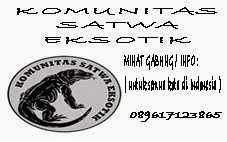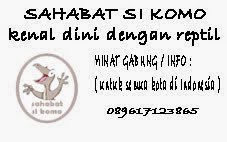T-REC Semarang-komunitas-reptil-semarang-CITES-convention-on-international-trade-in-endangered-species-of-wild-fauna-and-flora-valid from 12 june 2013-appendix 2-sekilas-tentang-iguana-dada-hitam-ekor-berduri-black-chested-spiny-tailed-iguana-honduran-paleate-spiny-tailed-iguana-Aguán-Valley-iguana-cayos-cochinos-iguana-rio-aguan-iguana-Ctenosaurus-palearis
- CITES…………valid from 12June 2013
- CLASS REPTILIA ( REPTILES )
-
FAMILY : iguanidae
- Ctenosaurus palearis
- Appendix : 2
- Note :sumber berbahasa asing , dengan link :
Dari Wikipedia, ensiklopedia bebas
Ctenosaura melanosterna, umumnya dikenal sebagai iguana dada hitam ekor berduri / black-chested spiny-tailed iguana , adalah spesies kadal dalam keluarga Iguanidae.
jangkauan geografis
adalah endemik Honduras.
habitat
Habitat alamnya adalah hutan kering subtropis atau tropis.
Status konservasi
terancam oleh hilangnya habitat / habitat loss .
Honduran paleate spiny-tailed iguana description
nama ilmiah untuk the Honduran paleate spiny-tailed iguana (Ctenosaura melanosterna) , Ctenosaura, berasal dari dua kata Yunani yang berarti 'kadal sisir' dan mengacu pada besar nya , flattened spines . Punggung atas, dada dan lengan depan dari iguana Honduras paleate ekor berduri adalah coklat gelap sampai hitam, dan kontras dengan tubuh biru pucat di bawah badan dan ekor. Sisik besar berwarna menutupi kepala, dan mata oranye terang. Flap kulit, yang dikenal sebagai 'dewlap', menggantung dari bawah dagu, biasanya lebih besar dan lebih menonjol pada jantan.
Honduran paleate spiny-tailed iguana status
Populasi iguana Honduras paleate ekor berduri dari Cayos Cochinos terdaftar sebagai Endangered (EN) dan populasi dari Valle de Aguan diklasifikasikan sebagai Critically Endangered (CR) pada IUCN Red List dan spesies terdaftar di Appendix II CITES .
Original text :
Ctenosaura
melanosterna
From
Wikipedia, the free encyclopedia
Ctenosaura melanosterna, commonly known as the
black-chested spiny-tailed iguana, is a species of lizard in the Iguanidae
family.
Geographic range
It is endemic to Honduras.Habitat
Its natural habitat is subtropical or tropical dry forests.Conservation status
It is threatened by habitat loss.Honduran paleate spiny-tailed iguana description
The first part of the scientific name for the Honduran
paleate spiny-tailed iguana (Ctenosaura
melanosterna), Ctenosaura,
derives from two Greek words meaning ‘comb lizard’ (3)
and refers to its large, flattened spines (4).
The upper back, chest and forelimbs of the Honduran paleate spiny-tailed iguana
are dark-brown to black, and contrast with the pale blue lower body and tail.
Large tan-coloured scales cover the head, and the eyes are bright orange. The
flap of skin, known as the ‘dewlap’, which hangs from under the chin, is
typically larger and more prominent on males (4)
(5).
Until 1997, the Honduran paleate spiny-tailed iguana was
thought to be conspecific
with the Guatemalan spiny-tailed iguana (Ctenosaura
palearis), but it is now considered a separate species based on
differences in colour, skeletal structure and behaviour (4)
(6).
Also known
as
Aguán Valley iguana, black-chested
spiny-tailed iguana, Cayos Cochinos iguana, Rio Aguán iguana.
Spanish
Jamo, Jamo Negro.















